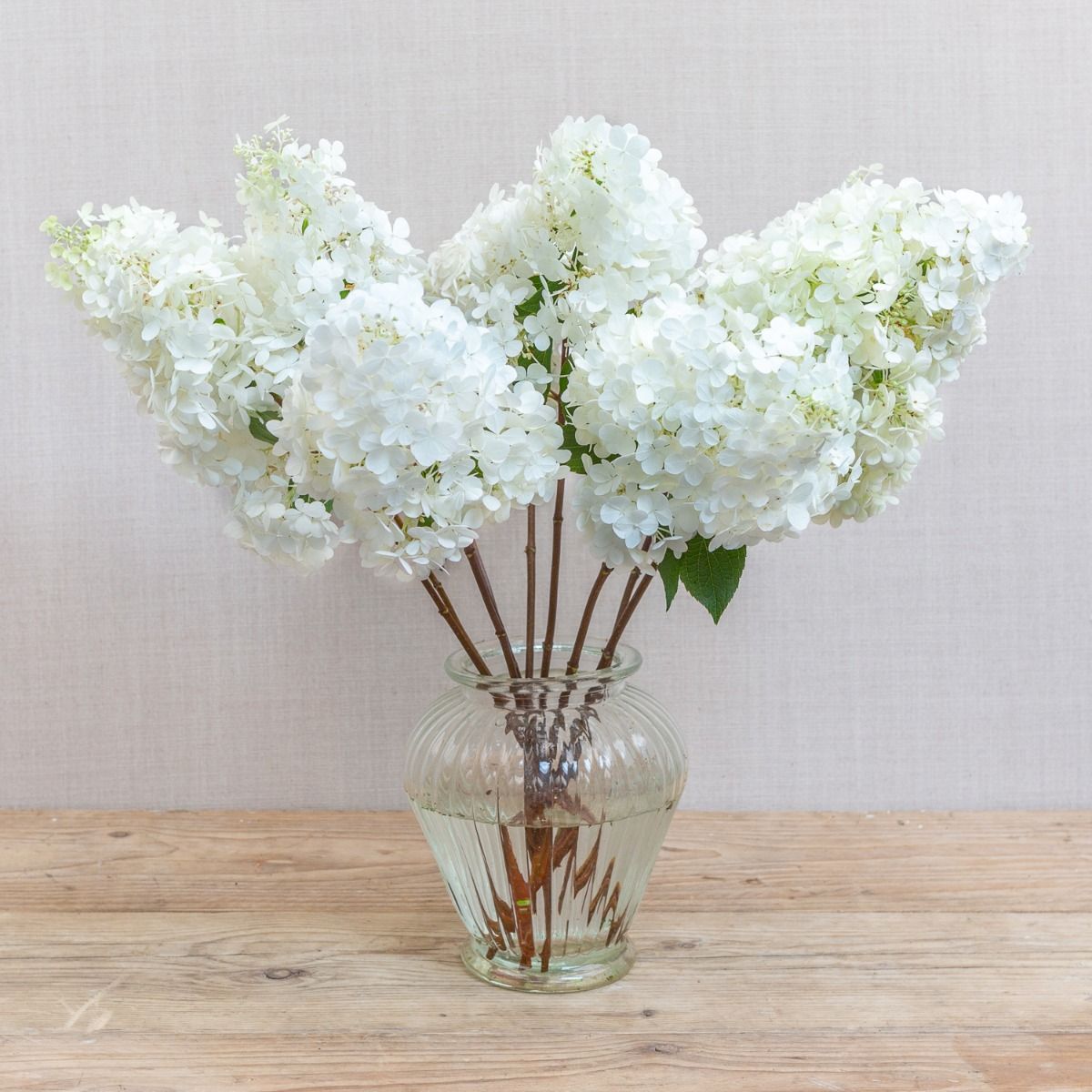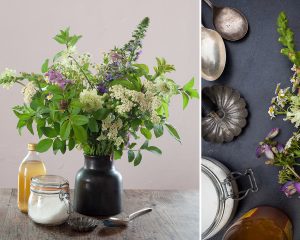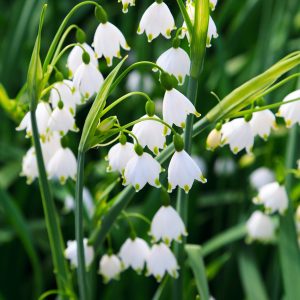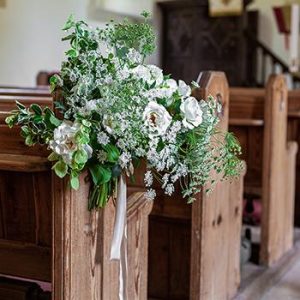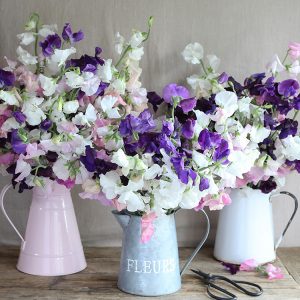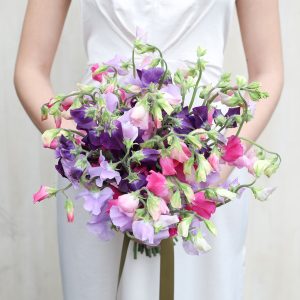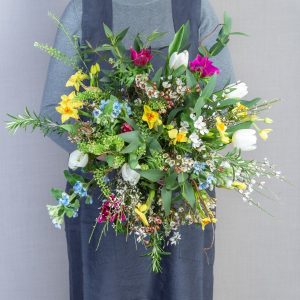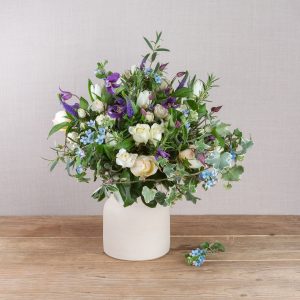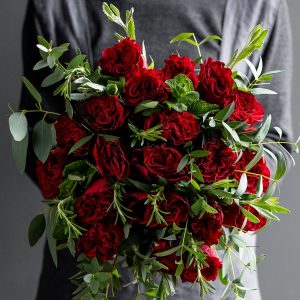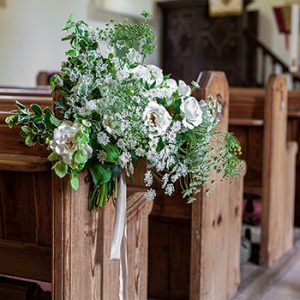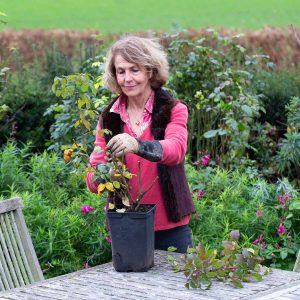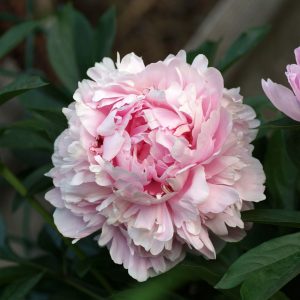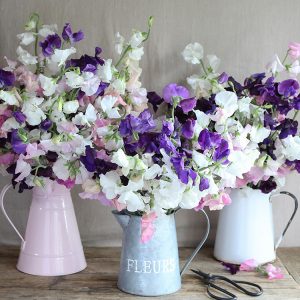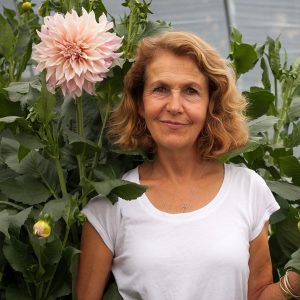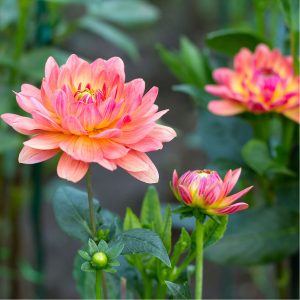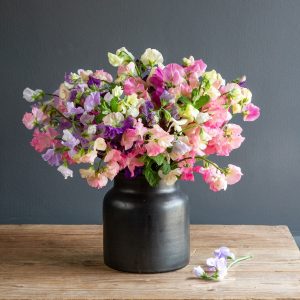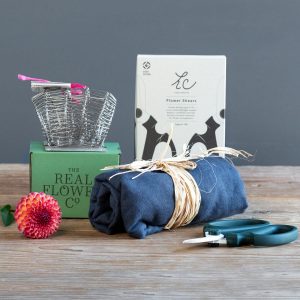Ten things you should know about Hydrangeas
Ten things you should know about Hydrangeas
TThe Real Flower Company’s Hampshire farm is overflowing with Hydrangeas. Here are ten facts about this dramatic and spectacular flower.
1. All In The Name
The name Hydrangea is derived from the Greek hydros (water) and angos (jar) and so means ‘water vessel’. The name refers to the shape of the seed capsules, which resembles a water jug. The large, showy Hydrangea macrophylla, commonly found in English gardens, was also known as Hortensia, after 18th-century French astronomer and mathematician Hortense Lapaute.
2. Rainbow Colours
Depending on the acidity of the soil, the colour of Hydrangea flowers can change from blue to purple to pink. Adding coffee grounds, citrus peel or eggshells renders the soil more acidic and causes flowerheads to become purple, with an increase in acidity turning blooms blue.
3. Spheres and Cones
We grow two main varieties of Hydrangea that are popular with florists on our sustainable South Downs farm. Hydrangea Annabelle, in pink or white, has spherical heads formed of dramatic clusters of flowers. In Hydrangea Paniculata, which comes in pink, white or antique cream, the flowers are arranged in the form of a cone.
4.Old as Time
Ancient Hydrangea fossils dating back more than 40 million years have been discovered in North America with slightly more recent ones found in Poland. Cultivated Hydrangeas were first developed in Japan and were introduced to Europe from North America in the early 1700s.
5.Cultural Difference
In the Western world, Hydrangeas have been said to symbolise heartlessness, frigidity and vanity, perhaps because the plant produces many flowers but few seeds. In Victorian times it was believed that young women with Hydrangeas in their gardens would never marry. In Asia, by contrast, pink Hydrangeas mean ‘you are the beat of my heart’ and the flower is associated with understanding, emotion and apology. According to legend, a Japanese emperor gave blue Hydrangeas to the family of a girl he loved to make up for his neglect.
6.Bathing Buddha
In Japan, a sweet tea made from Hydrangea leaves is poured over statues of the Buddha on 8 April – thought to be his birthday. The tea, Ama-cha, is a substitute for the nectar or ambrosia with which he said to have been anointed by dragons when he was born.
7. Nil by Mouth?
Hydrangeas contain cyanogenic glycoside and flowers and leaves eaten untreated can be poisonous to humans as well as to dogs, cats and horses. Ama-cha is said to help alleviate kidney stones and malaria and herbalists recommend medicines derived from the plant’s root and rhizome for the treatment of urinary tract disorders and from the bark for pain relief.
8. Popular Plants
Hydrangeas are always a favourite with our customers at The Real Flower Company and this year we have introduced two Hydrangea Boxes that give you ten Magical Fire or Vanilla Fraise Hydrangeas freshly cut on our South Downs farm. Hydrangeas also feature in our bouquets, and as summer fades the vibrant flowers of Hydrangea Paniculata change to a muted coffee blush with antique pink tips that works beautifully with our autumn colour palette.
9. Plant of the Year
Hydrangea ‘Runaway Bride Snow White!’, bred by Ushio Sakazaki from Japan, was named Plant of the Year at the 2018 RHS Chelsea Flower Show. It has an unusual weeping habit, making it suitable for hanging baskets as well as borders, and a mass of white lacecap flowers that grow along the length of the stem, giving it the name of a garland Hydrangea.
10. Winter Wonder
Hydrangeas dry well and add texture and colour to winter arrangements and wreaths. Our dried everlasting wreath will feature hydrangeas along with other flowers and foliage grown and dried on our sustainable Hampshire farm. Hydrangeas are very thirsty plants, so you can dry them at home by leaving them in a vase with just a little water.
You can order our Hydrangea Boxes – each with ten Hydrangea stems for you to arrange at home – for next-day delivery around the UK. Our shops at Parsons Green and Chelsea Green in London offer Hydrangeas as single stems, bunches or as part of arrangements – order in person or by phone for same-day London delivery.
RECENT POSTS
- July 2025
- August 2024
- April 2024
- March 2024
- February 2024
- June 2022
- May 2022
- April 2022
- March 2022
- February 2022
- December 2021
- October 2021
- September 2021
- August 2021
- July 2021
- May 2021
- April 2021
- March 2021
- February 2021
- January 2021
- December 2020
- November 2020
- October 2020
- September 2020
- August 2020
- June 2020
- May 2020
- March 2020
- February 2020
- January 2020
- December 2019
- October 2019
- September 2019
- August 2019
- July 2019
- June 2019
- May 2019
- April 2019
- March 2019
- February 2019
- January 2019
- December 2018
- November 2018
- September 2018
- August 2018
- July 2018
- June 2018
- May 2018
- April 2018
- March 2018
- February 2018
- January 2018
- December 2017
- November 2017
- October 2017
- September 2017
- August 2017
- July 2017
- June 2017
- May 2017
- April 2017
- March 2017
- February 2017
- December 2016
- November 2016
- October 2016
- September 2016

